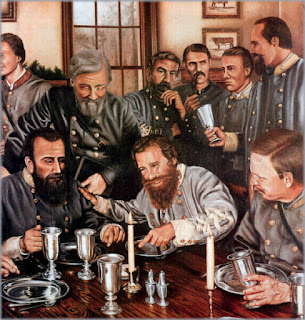U.S. Soldier with a Model 1917 Rifle
Firing the P-14 and Model 1917 rifles are a pleasant
experience. The P-14 is highly accurate and has mild recoil. The 303 British
cartridge is less powerful that the 30-06 and very pleasant to shoot in a heavy
rifle like the P-14. The five-groove rifling of the P-14 and Model 1917
contributes to fine accuracy. The British and Commonwealth military used the
P-14 in both World Wars as a sniper rifle. The Model 1917 sniper variant was a
prototype only.
Afghan soldier with a German Stahlhelm and a P-14 rifle in post WWI Afghanistan
The excellent combat sights of theP-14 and Model 1917 were
superior to any other Great War rifle. The aperture rear sight and protected
front post sight were years ahead of their time. In pre-1945 rifles, only the
Model 1903A3 and M1 rifles best them.
The Allies in early World War II used both rifles primarily
as training and home guard rifles. The Philippines, China, and France received
Model 1917 rifles as military aid. British P-14 rifles were supplied to
Afghanistan after the First World War and to Greece, during the Greek Civil
War, as late as 1946.
Surprisingly, both rifles were available to civilians
between the world wars. The 1918 United States National Matches used the Model
1917 rifle where it was critsized for a lack of a quick windage adjustment
capability. British rifle competitors
used the P-14 with great success in the interwar period. The Model 1917 was
available as a surplus rifle in the 1920s and 1930s for the sum of $35 dollars
from the director of civilian marksmanship.
After the Second World War, the United States and Britain,
warehoused their remaining stocks of P-14 and Model 1917 rifles. Both
governments disposed the inventory of these rifles through surplus channels
over the next several decades. Model 1917 Rifles in British use were marked
with a red stripe on the stock to prevent ammunition mix-ups.
The P-14 and Model 1917 are wonderful pieces of history and
capable if fine accuracy on the shooting range.
They are sometimes the forgotten rifles of both world wars.









